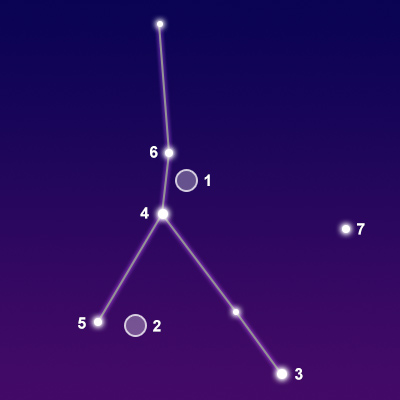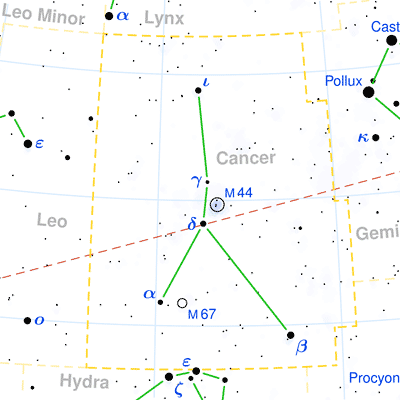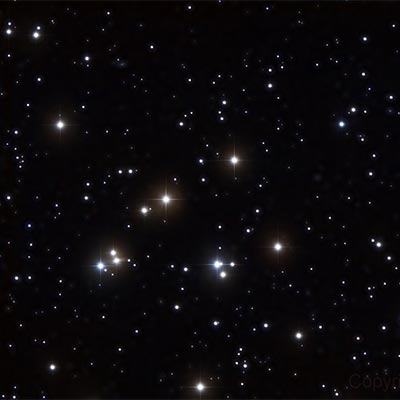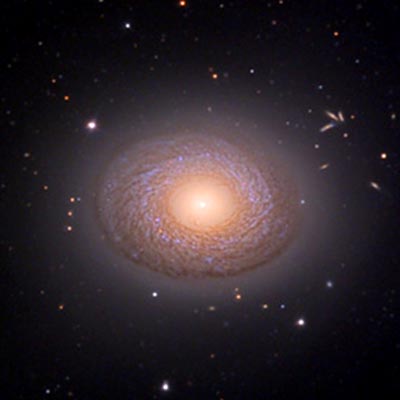Pronunciation:
(KAN-ser)Abbreviation:
CncGenitive:
CancriRight Ascension:
9 hoursDeclination:
20 degreesArea in Square Degrees:
506Crosses Meridian:
9 PM, March 15Visible Between Latitudes:
90 and -60 degreesThe constellation Cancer, the crab, is visible in the northern hemisphere in the early spring. It is visible at latitudes between 90 degrees and -60 degrees. It is a medium-sized constellation filling 506 square degrees of the sky. It ranks 31st in size among the 88 constellations in the night sky. It is bordered by Gemini to the west, Lynx to the north, Leo Minor to the northeast, Leo to the east, Hydra to the south, and Canis Minor to the southwest. It is one of the thirteen constellations of the zodiac. This means it lies along the path the Sun travels in the sky during the year.
Cancer is one of the 48 constellations originally listed by the Greek astronomer Ptolemy in the second century. Its name means “the crab” in Latin. It is believed to represent the crab in the story of the twelve labors of Hercules. It was sent by the goddess Hera to distract Hercules while he is fighting the Hydra. When the crab tries to kill Hercules, he kicks it so hard that it is propelled into the sky among the stars. In another version, the crab tried to grab Hercules’ toe, but Hercules crushed it under his foot. In some ancient cultures this constellation was believed to be the gate through which souls passed from Heaven to Earth as they were born into human bodies.

points of interest below © Sea and Sky

© Torsten Bronger CC BY-SA 3.0
2
3
4
5
6
7
M67
Altarf
Asellus Australis
Acubens
Asellus Borealis
Tegmen
King Cobra Cluster
"End or Edge"
"Southern Donkey"
"The Claws"
"Northern Donkey"
"The Shell"
Open Star Cluster
Orange Giant Star
Orange Giant Star
Multiple Star System
Blue Subgiant Star
Multiple Star System
6.10
3.54
3.94
4.26
4.66
5.63
Cancer is not a particularly bright constellation. The brightest star is Altarf with a visual magnitude of only 3.54. It is an orange giant star located 290 light years from earth. The second brightest star is Asellus Australis with a magnitude of 3.94. It is also an orange giant that lies 180 light years away. The third brightest star is Acubens, a multiple star system with a combined visual magnitude of 4.26. It is located approximately 174 light years from our solar system.
Cancer contains two Messier objects. The most famous of these is M44, the Beehive Cluster. Known also as Praesepe, it is an open cluster of at least 200 stars that resembles a swarm of bees. The other object, M67, is another open cluster containing over 100 stars. This constellation contains a number of other dim deep-sky objects that can only be seen with large telescopes. The most notable of these is NGC 2775, a nearly face-on spiral galaxy with a bright central core and dark dust lanes.

© Miguel Garcia / CC BY-SA 4.0




